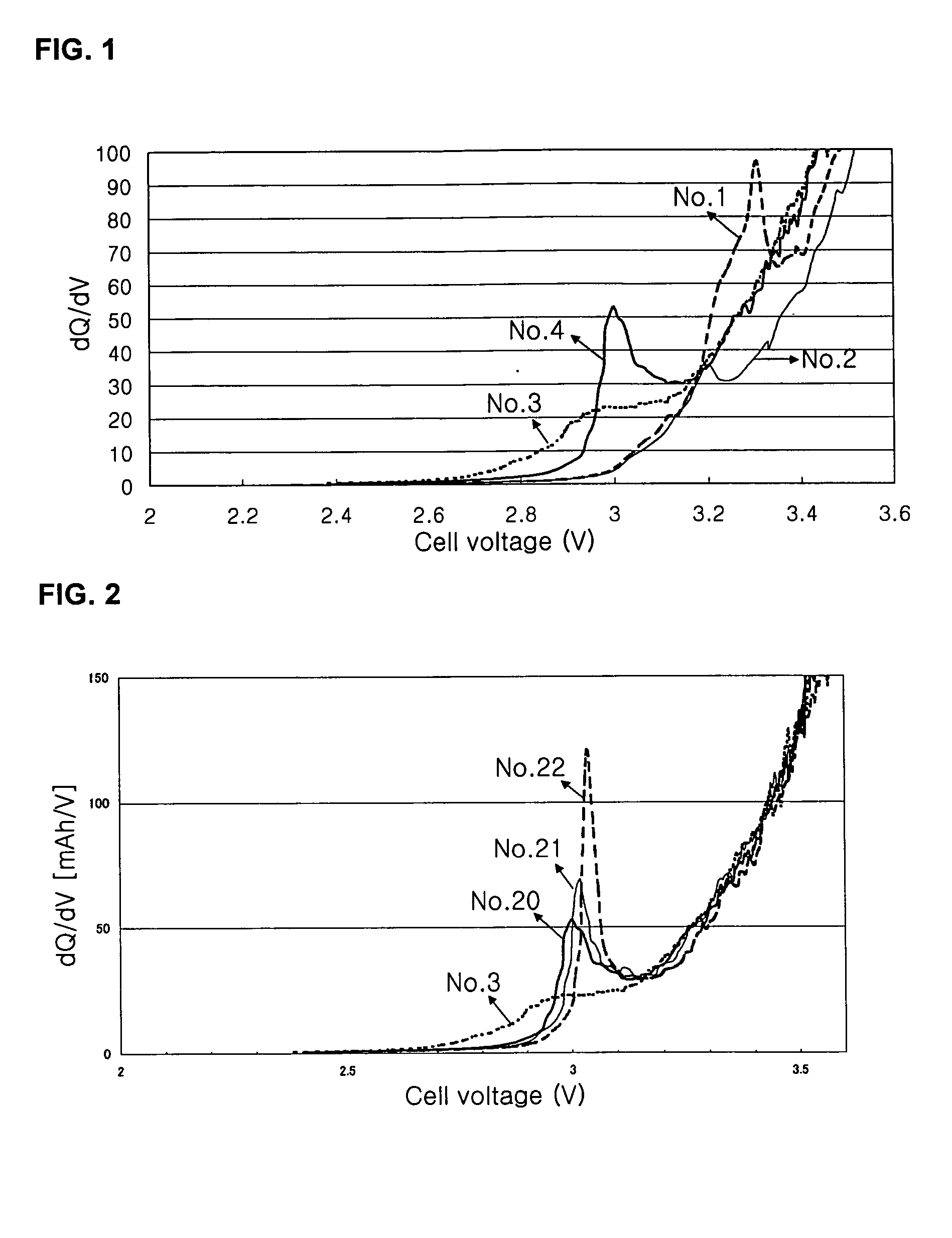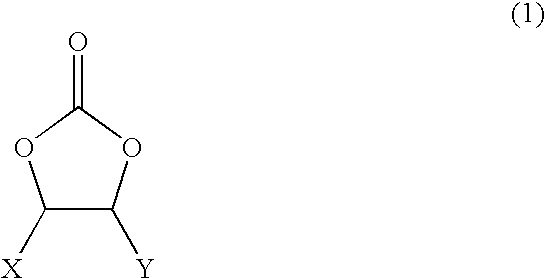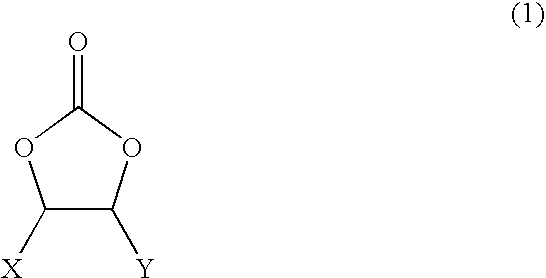Electrolyte for lithium secondary battery and lithium secondary battery comprising same
- Summary
- Abstract
- Description
- Claims
- Application Information
AI Technical Summary
Benefits of technology
Problems solved by technology
Method used
Image
Examples
first embodiment
According to the present invention, the electrolyte comprises a non-aqueous organic solvent comprising a cyclic carbonate and a γ-butyrolactone; an ester compound having an electron withdrawing group; and at least two salts.
According to the second embodiment of the present invention, the lithium secondary battery comprises a negative electrode capable of intercalating / deintercalating the lithium; a positive electrode capable of intercalating / deintercalating the lithium; and the electrolyte according to the first embodiment.
Further, the electrolyte may further comprise a gelling compound. When the gelling compound is added, a gel electrolyte is provided, and when the gelling compound is not added, a liquid electrolyte is provided.
The cyclic carbonate may include ethylene carbonate, propylene carbonate, or a mixture thereof, and it is preferably ethylene carbonate. The cyclic carbonate may be added in an amount of at most 50% by volume based of the non-aqueous organic solvent, pr...
third embodiment
According to the present invention, the lithium secondary battery comprises a negative electrode capable of intercalating / deintercalating the lithium; a positive electrode capable of intercalating / deintercalating the lithium; and an electrolyte added with a fluorinated cyclic ester.
According to the third embodiment, the electrolyte is constructed by adding the fluorinated cyclic ester, and further adding an agent for modifying a film on the negative electrode. The electrolyte may further comprise a gelling compound. When the gelling compound is added, a gel electrolyte is obtained, while when the gelling compound is not added, a liquid electrolyte is obtained.
The non-aqueous electrolyte is composed of a cyclic ester, a low viscosity solvent, and a lithium salt. The cyclic ester preferably comprises at least one of ethylene carbonate, butylene carbonate, propylene carbonate, and a γ-butyrolactone. The lithium ions are easily dissolved in the cyclic carbonate to increase the ionic ...
examples
Preparation of Lithium Secondary Cell Nos. 1˜28
Monofluoro ethylene carbonate (FEC), nitro ethylene carbonate (NEC), or cyano ethylene carbonate (CEC) was added in an amount of 0 to 20% by the weight based on the non-aqueous electrolyte, and at the same time, a second salt of LiBF4 was added in an amount of 0 to 1 mol / L to provide electrolyte Nos. 1 to 28 as shown in Table 1. In the electrolyte of Example No. 12, the gelling compound of polyethylene glycol diacrylate (PEGDA) was added in an amount of 3% by weight.
In Table 1, the amounts of monofluoro ethylene carbonate, nitro ethylene carbonate, or cyano ethylene carbonate are expressed as “% by weight”; the composition ratio of the none-aqueous solvent is shown as “% by volume”; and the salts of LiBF4, LiPF6, and BETI are shown in units of “mol / L” based on the electrolyte. In Table 1, FEC represents monofluoro ethylene carbonate, NEC represents nitro ethylene carbonate, CEC represents cyano ethylene carbonate, EC represents ethy...
PUM
 Login to View More
Login to View More Abstract
Description
Claims
Application Information
 Login to View More
Login to View More - R&D
- Intellectual Property
- Life Sciences
- Materials
- Tech Scout
- Unparalleled Data Quality
- Higher Quality Content
- 60% Fewer Hallucinations
Browse by: Latest US Patents, China's latest patents, Technical Efficacy Thesaurus, Application Domain, Technology Topic, Popular Technical Reports.
© 2025 PatSnap. All rights reserved.Legal|Privacy policy|Modern Slavery Act Transparency Statement|Sitemap|About US| Contact US: help@patsnap.com



